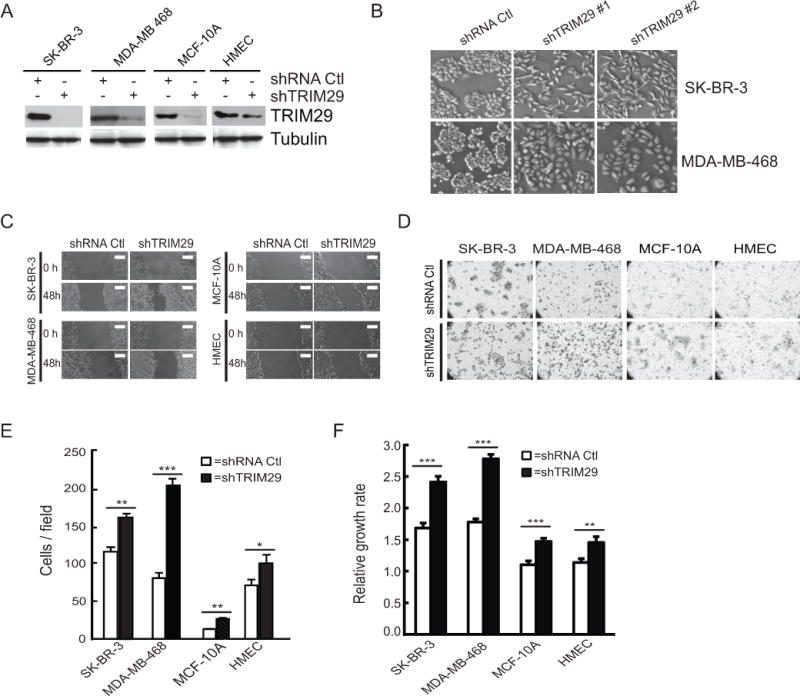Figure 3. TRIM29 knockdown in breast tumor and control lines increases cell motility, invasiveness, and growth.

A. SK-BR-3, MDA-MB-468, MCF-10A, and HMEC cells were transduced with lentivirus prepared from empty pLKO.1 plasmid (shRNA Ctl) or plasmid encoding a TRIM29-specific shRNA sequence (shTRIM29) and following selection were immunoblotted with anti-TRIM29 or Tubulin. B. Representative phase-contrast images of SK-BR-3 and MDA-MB-468 cells transduced with shRNA Ctl or two independent shTRIM29 vectors (#1, #2). Note that these two different breast cancer cell lines show similar cell morphology changes (a mesenchymal-like phenotype) when TRIM29 is knocked down with two independent shRNAs. C. Cultures were wounded with a pipette tip and photographed directly (0 hr) and 48 hr after wounding. Scale bar=350 μm. D. Representative micrographs of control and TRIM29 knockdown cells that have invaded through a Matrigel membrane. E. Invaded cells were counted in control (open bars) and TRIM29 knockdown (filled bars) lines in ten randomly chosen fields, average cells/field is graphed. F. Relative growth rates of control (open bars) and TRIM29 knockdown (filled bars) lines were determined using CellTiter Blue Reagent. Error bars = 1.0 SE. (* indicates P<0.05; ** indicates P<0.01, *** indicates P<0.001, Student’s t-test).
